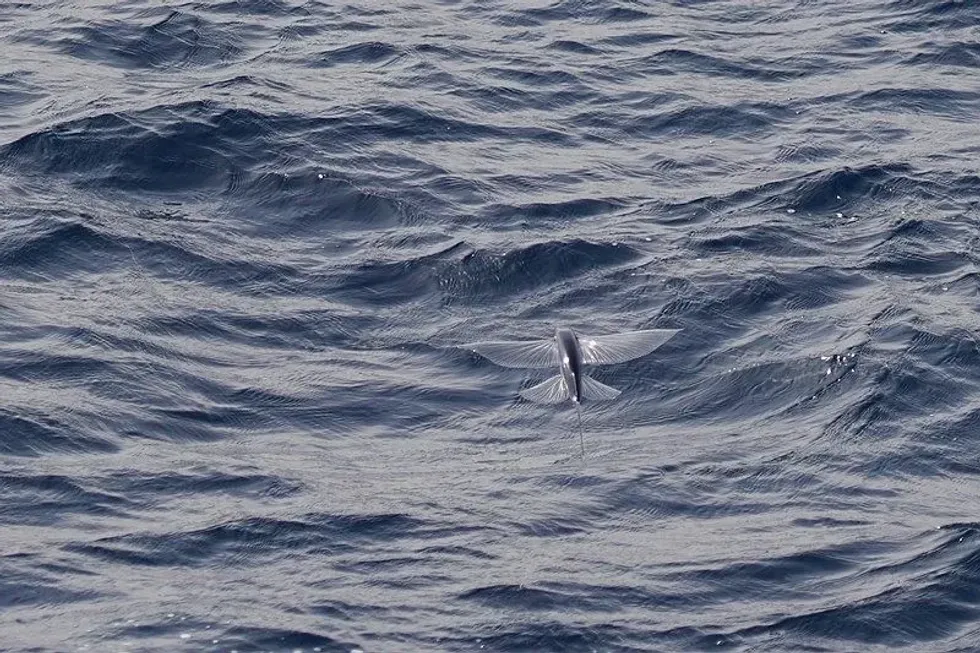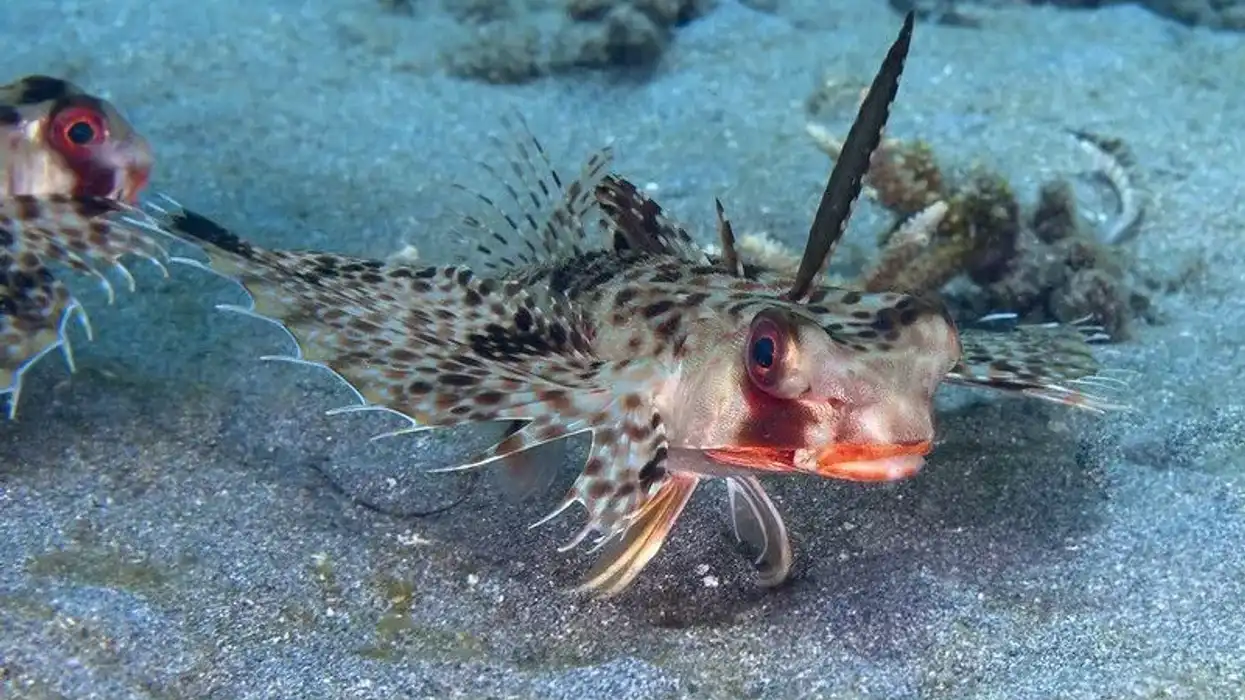Is there a fish called flying fish? Are they real? Do they actually fly?
These are some of the common questions circling about this fish. Yes, flying fish exists. A flying fish is a marine ray-finned fish that belongs to the Exocoetidae family.
They are mostly seen in the Pacific Ocean, Atlantic, and the Indian Ocean. Contrary to their name, they do not have a powerful flight. They use their wing-shaped pectoral fins to gather speed and propel out of water in order to escape from the underwater predators and glide in the air using their wings and the forked tail.
Here are some fun, engaging, and interesting facts about flying fish species with wing-shaped pectoral fins that will make you more curious about them. Afterward, do have a look at our other animal fact files on fathead minnow and Florida pompano.
Flying Fish Interesting Facts
What type of animal is a flying fish?
A flying fish is ray-finned marine fish that belong to the family Exocoetidae and has a torpedo-shaped head. It cannot actually have powered flights but has the ability to leap out of water in a powerful way.
The wing-like pectoral fins and forked tail are used by it for gliding long distances with an impressive speed. It is also known as flying cod in some regions.
These fish are mostly seen in Barbados and the place is called the 'land of the flying fish' due to the huge population of the species in this place. These fish are the national cuisine of Barbados.
What class of animal does a flying fish belong to?
A flying fish is a fish with wing-like pectoral fins and belongs to the Actinopterygii class. It comes under the Beloniformes order of the Exocoetidae family.
There are around seven to nine genera of this family with 64 species. The scientific name of flying fish is Exocoetidae. These fish are also known as flying cod for when they are in the air, the wings and the tail allow them to glide for up to 650 ft (198 m) in the air.
How many flying fish are there in the world?
Forty species of flying fish are known to exist in the open water. There is no accurate and rough estimate of the total number of flying fish in the ocean water across the world but it is believed that their population is stable.
Where does a flying fish live?
Flying fish live in the Indian, Pacific, and Atlantic Oceans. They are mostly found in Barbados. This place is called the 'land of the flying fish' due to its large population in this region, especially plankton-rich outflows of the Orinoco River in Venezuela. They are seen on the Atlantic and Pacific coasts of the United States.
What is a flying fish's habitat?
Flying fish prefer to live in the tropical and subtropical waters of the Atlantic and Pacific Oceans, as well as, in the open ocean waters. Some flying fish are also found in the outskirts of coral reefs. They are abundantly found in Barbados.
Who do flying fish live with?
Flying fish live in very large groups and are always seen together. The number may be really high during the mating season.
How long does a flying fish live?
The flying fish has an average lifespan of around five years in the wild.
How do they reproduce?
Flying fish usually mate when the ocean currents are low, especially in the open oceans. Large groups of flying fish are together during the spawning. Female flying fish lay a large number of eggs on the surface and these eggs are attached to seaweeds or floating debris by sticky filaments.
What is their conservation status?
Flying fish are classified as Least Concern species by the IUCN Red List. They have a stable population and do not face any extinction threat.
Flying Fish Fun Facts
What do flying fish look like?
The flying fish is ray-finned marine fish that belong to the Exocoetidae family. Its pectoral fins are highly modified and are very large. It has a streamlined torpedo shape which helps it to leap from the water.
It has enlarged pelvic fins as well. These fish are called flying fish as they have the ability to glide above the water's surface.
Flying fish are dark blue-gray on the sides and have silvery color on the below and lower sides. Their tails are fork-shaped where the upper end is shorter than the lower end. Flying fish increase their time in the air by flying straight.
How cute are they?
Flying fish are very beautiful in appearance and the way they fly is really a treat to watch. They are extremely cute in appearance.
How do they communicate?
Fish use gestures and vibrations to communicate with each other.
How big is a flying fish?
The flying fish is a small marine fish that has a length of around 7-18 in (18-46 cm). It is very small compared to a dolphin.
How fast can a flying fish swim?
The flying fish has an average speed of 50-56 mph (80-90 kph).
How much does a flying fish weigh?
On an average scale, an adult flying fish weighs around 2.2 lb (1 kg).
What are the male and female names of the species?
As the flying fish is a small marine ray-finned fish, it belongs to the Exocoetidae family. It is known as a male flying fish and female flying fish.
What would you call a baby flying fish?
A baby flying fish is called a fry. The juveniles start to fly after they have attained the length of 2 in (5 cm).
What do they eat?
Flying fish are omnivores. Their primary diet includes plankton and also consumes small crustaceans.
Main predators of flying fish include marlin, squid, swordfish, tuna, dolphins, and porpoises.
Are they eaten by humans?
Flying fish are commercial fish available in the market and are consumed by humans. This fish is the national cuisine of Barbados and is used in Japanese cuisine as well.
Would they make a good pet?
Flying fish are not suitable for keeping as a pet.
Did you know...
Some species of flying fish have wing-like pelvic fins that help them in gliding. They are called four-winged flying fish.
Flying fish's flight ability
Flying fish actually cannot fly like a bird. They can leap out of the water for a short period of time in order to escape from their underwater predators. As per flight measurements, these fish can travel at a speed of up to 50-56 mph (80-90 kph).
What do flying fish symbolize?
Flying fish is considered a symbol of good luck, blessing, or a solution to problems. It also depicts success, favorable circumstances, and the discovery of new paths.
Here at Kidadl, we have carefully created lots of interesting family-friendly animal facts for everyone to discover! Learn more about some other fish from our fluke fish facts and glowlight rasbora facts pages.
You can even occupy yourself at home by coloring in one of our free printable flying fish coloring pages.










